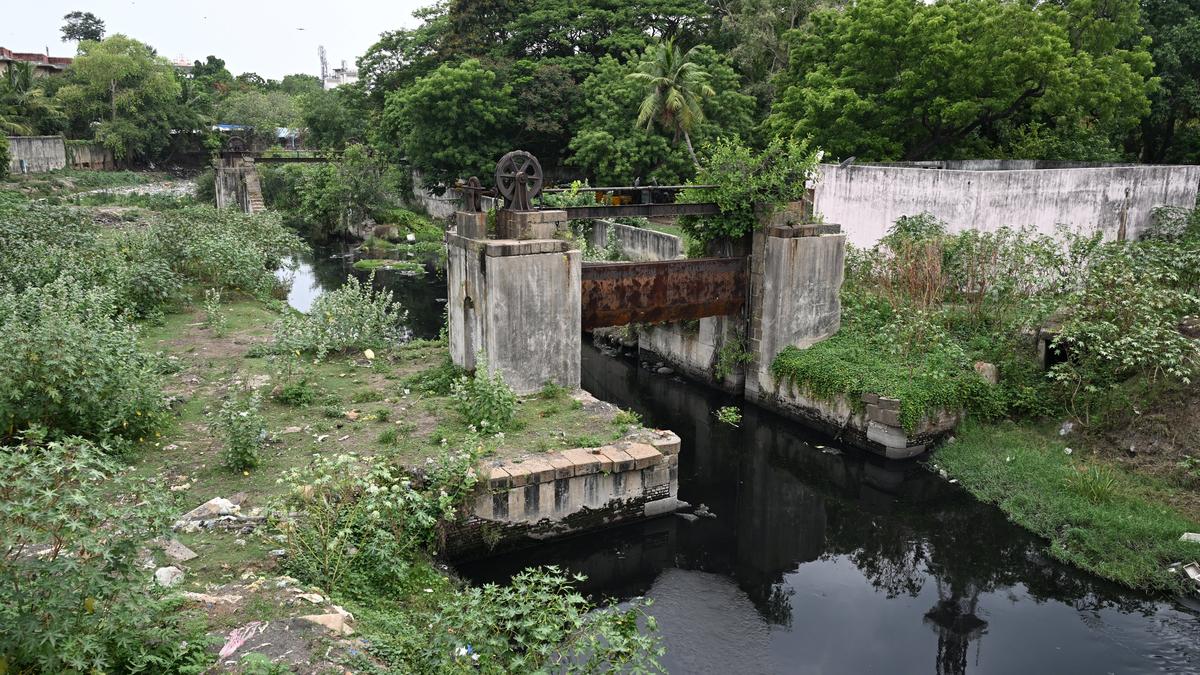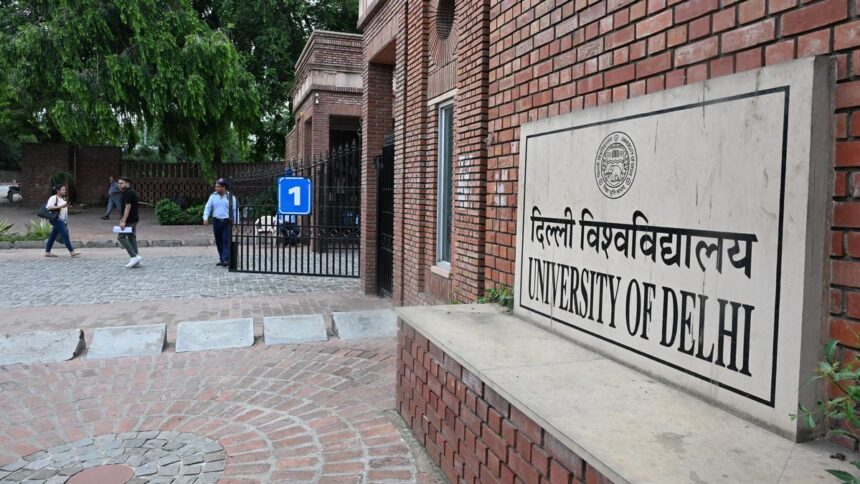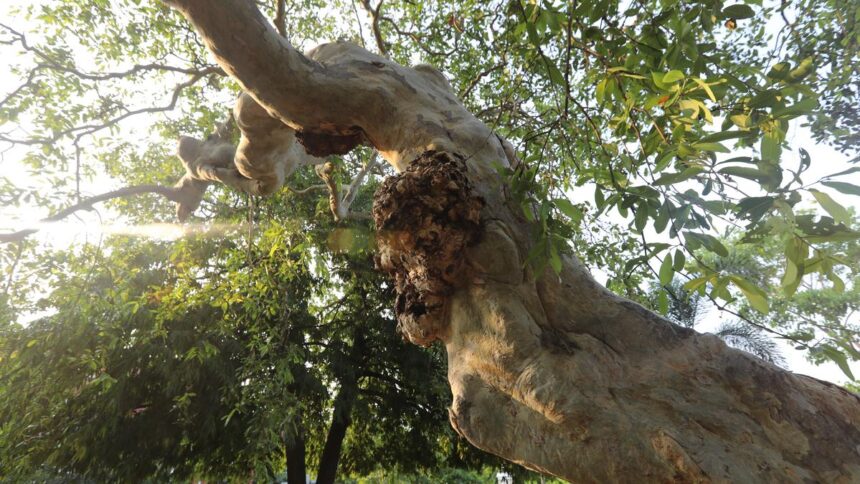
The WRD plans to dredge the Central Buckingham Canal and increase its carrying capacity by 700 cusecs, protect its banks, and create recreational spaces at a few places.
| Photo Credit: B. JOTHI RAMALINGAM
The Water Resources Department (WRD) will soon begin preliminary work on a Detailed Project Report (DPR) to assess the feasibility of operating a water metro and developing the National Waterway-4 (NW-4) in Chennai. The project will cover the stretch of Buckingham Canal between Ennore and Marakkanam.
As an initial step towards restoring the canal and improving its navigability, the WRD will take up restoration of a five-km stretch of the Central Buckingham Canal from Chepauk to Greenways Road (DGS Dinakaran Salai). The ₹31-crore project will be part of the larger plan, said the officials. The WRD will prepare the DPR with the financial assistance and consultation of Inland Waterways Authority of India, the nodal agency under the Union Ministry of Ports, Shipping, and Waterways. The NW-4 aims to connect Telangana, Andhra Pradesh, Tamil Nadu, and Puducherry.
Officials said that while there was a technical feasibility to turn the canal into a waterway, there were several challenges, including sewage pollution, encroachments, narrow stretches, and cost. The canal should be dredged for a minimum depth of 3 m in several parts for the smooth movement of vessels. For instance, the original bed level of the Buckingham Canal is nearly 2 m below mean sea level. But, the Central Buckingham Canal has accumulated sludge up to 1 m above mean sea level, which has impeded free flow of water and affected its flood handling capacity, he said. The WRD plans to dredge the Central Buckingham Canal and increase its carrying capacity by 700 cusecs, protect the banks, and create recreational spaces at a few places. However, the project will be implemented without the need to remove encroachments. More such measures are needed to achieve the larger goal of canal restoration, the official said.
“We need a minimum width of 15 m to make it a functional waterway. However, the average width varies between 50 m and 150 m in the South and North Buckingham Canal. Building a retaining wall along Central Buckingham Canal may provide a minimum of 3 m space on both sides,” an official said.
About 5,000 encroachments and a minimum of 15 sewage outfalls have been identified in the Buckingham Canal within city limits. “We are also considering the possibility of creating shutters/tidal gates near estuaries to control flow of tidal water and maintain a particular water level in the canal,” the official added.
The detailed project report would cover aspects, including ways to ensure navigability while accounting for the MRTS pillars and changing width and measures to tackle pollution in the canal.
Published – August 14, 2025 12:08 am IST



















